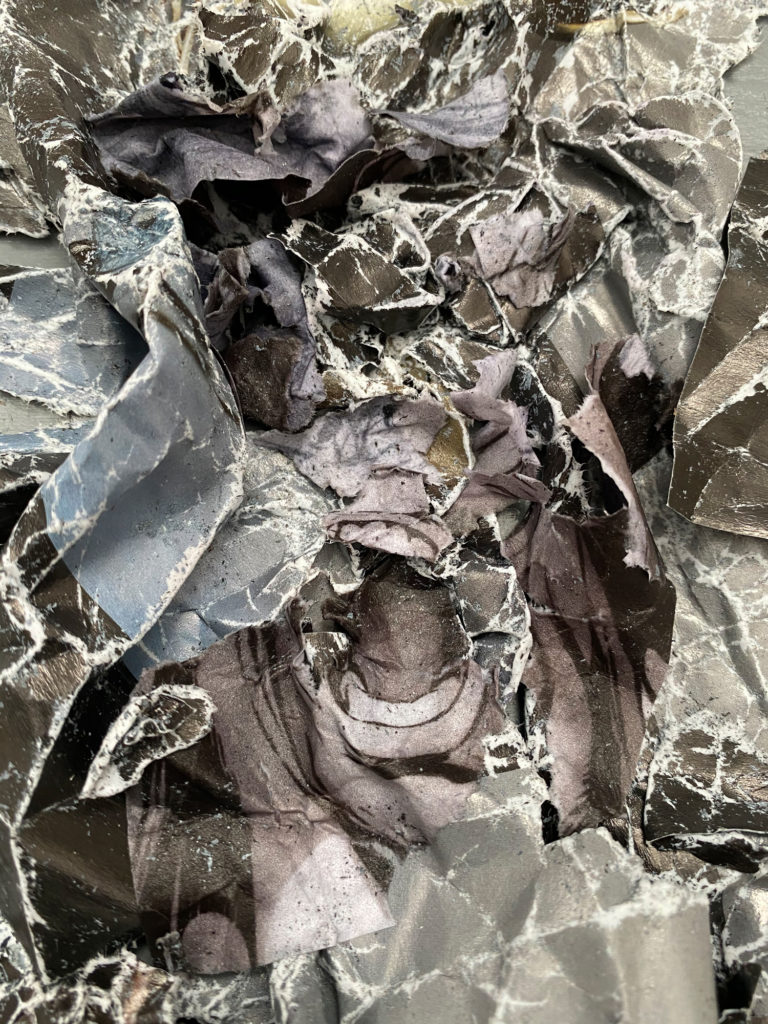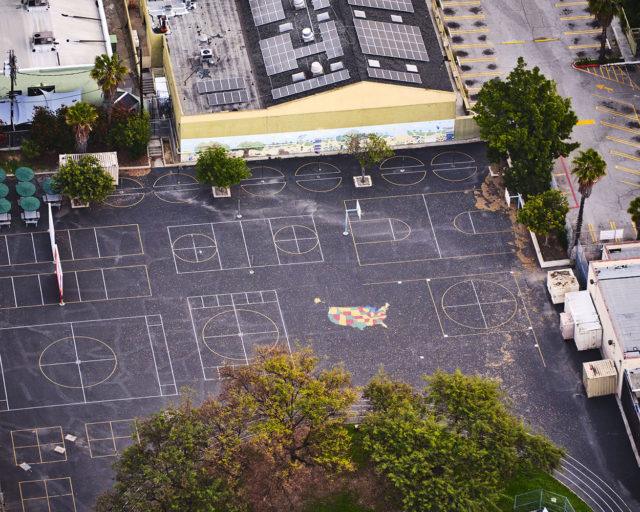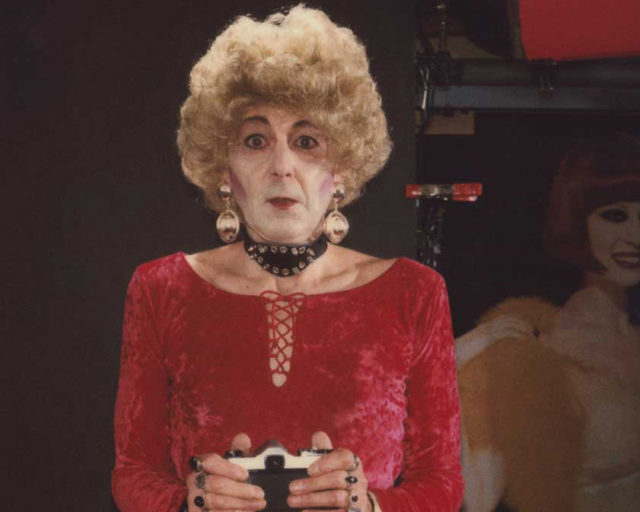From Christian Marclay, a Primal Scream Inspired by Pop Art and Politics
In his newest work, Marclay mines comic books and magazines to create expressive, feverish collages.
Christian Marclay, Untitled (Crying), 2020
Christian Marclay’s practice is vast and focused on the huge, expressive themes of sound, music, and media. Yet he works small, on laptops and, in the case of his current show at Fraenkel Gallery in San Francisco, modest collages on paper and stop-motion animation created on a poster-size collage. Most of the material here is gleaned from the pages of comic books, objects you can hold in your hand.
Comic books are filled with words that convey sounds—Wham! Pow! Thwack! Pop!—and deep connections to Pop art. In Roy Lichtenstein’s paintings from the 1960s, such words are enlarged to embody exuberant criticism of a culture on a complicated American upswing. The moderate scale of Marclay’s recent works, however, befits a time of periodic lockdowns, which he spent in London.
He might have been afforded the uninterrupted time to work on something as monumental as his masterpiece The Clock (2010), but the tenor of 2020, when these works here were created, was more internal, personal, and perhaps more emotional. Our anguish in isolation was (and is) something difficult to convey—hence the balcony orchestras in Italy, and the Black Lives Matter demonstrations around the US. These were among the few venues in which we could make our voices heard, to emote in anger, frustration, and, on occasion, joy.
Marclay has mined comic books based on their drawing styles, a mixture of Western and Asian titles, to create collages that convey the expressive voice. The works focus on heads: mouths open, emoting, broadcasting what visually appears to be pain, rage, or simply an audible volume. There’s some iconic art history hovering around here—Edvard Munch’s The Scream (1893) being the loudest, but also Caravaggio’s Medusa (1597) and some German Expressionism noted for good measure—but it’s difficult not to view these works in the now. How many times did you want to scream, passionately, at someone at the grocery store, or at the inexplicable people in charge? Three layers of antimicrobial fibers have a way of muffling sound and hiding the expressive nature of the mouth. Eyes convey emotion silently. Marclay revels in all forms of the auditory.

Face (Ecorché) (all works 2020), a comic-book collage, presents a face-like form created with curving onomatopoeia cutouts: sploosh, slamm, skreeeeeee, rinnggggggg (the latter bringing to mind Marclay’s irresistible 1995 video collage Telephones). The texts extend from this head like the snakes that form Medusa’s enraged coiffure. The clipped strips are glued to board, a pale brown backdrop as dry as the comic-book newsprint. The sentiments and sounds, however, are full of precipitation.
A series of fifteen collages, collectively titled No! (and also presented as a print portfolio), together form a score that will be interpreted and performed by musicians. These convey movement, melody, and gesture. The most traditionally score-like features circular cutouts of mouths sequenced in lines that you can imagine emulating, going from grimace to growl. Another presents a kind of descending audio, as figures are depicted falling in midair alongside a skyscraper.
The emotional temperature of these works is feverish. Raging Fire is another collage composed of flaming red/orange triangular shards, some resembling tiny pizza slices, cut from comic-book pages. It is a field of conflagration, something all too familiar in the Bay Area where, not long ago, the entire sky was a similar shade. A related single-channel silent video, Fire, sets these snippets in motion, so they resemble active flames generating an upward heat—it’s convincing and calmly mesmerizing, like a holiday fireplace video, yet sharper, more angular. Still, compared to Marclay’s previous video works, this one is ultimately ambient and not particularly memorable.

All works © the artist and courtesy Fraenkel Gallery, San Francisco
There are nine chromogenic prints in this exhibition, photographs that enlarge collages. Most feature a more expansive range of sources—glossy magazine photos of musicians, or perhaps movie stills of men with their mouths open. In Untitled (Shreds), a photo of Elvis Presley’s face is crumpled and black strips, perhaps formed by his leather jumpsuit, create emanating forms that are like a mangled, dimensional version of Alexander Rodchenko’s famous revolutionary poster of the gleeful, female worker shouting in protest, Books (Please)! In All Branches of Knowledge (1924). Elvis’s cry, however, is more opaque, his message disfigured.
Also with the other prints, there is dimension to the original collages formed by crumpling, crinkling, folding, and other physical pressures. Two—Untitled (Burning I) and Untitled (Burning II)—show a face on fire, the flames in their early stages and not immediately visible, though there is a slight haze of developing smoke. The temperature is rising.
Marclay’s show opened the day after President Joe Biden was inaugurated, when screaming was supplanted with a feeling of euphoria (a less vocal emotion), though clearly, there will be rallying cries ahead. There are feelings of dread, anxiety, and anguish that pervade here. It may not be Marclay’s strongest work, but it’s a gently cathartic encapsulation of 2020.
Christian Marclay is on view at Fraenkel Gallery, San Francisco, through March 26.


























